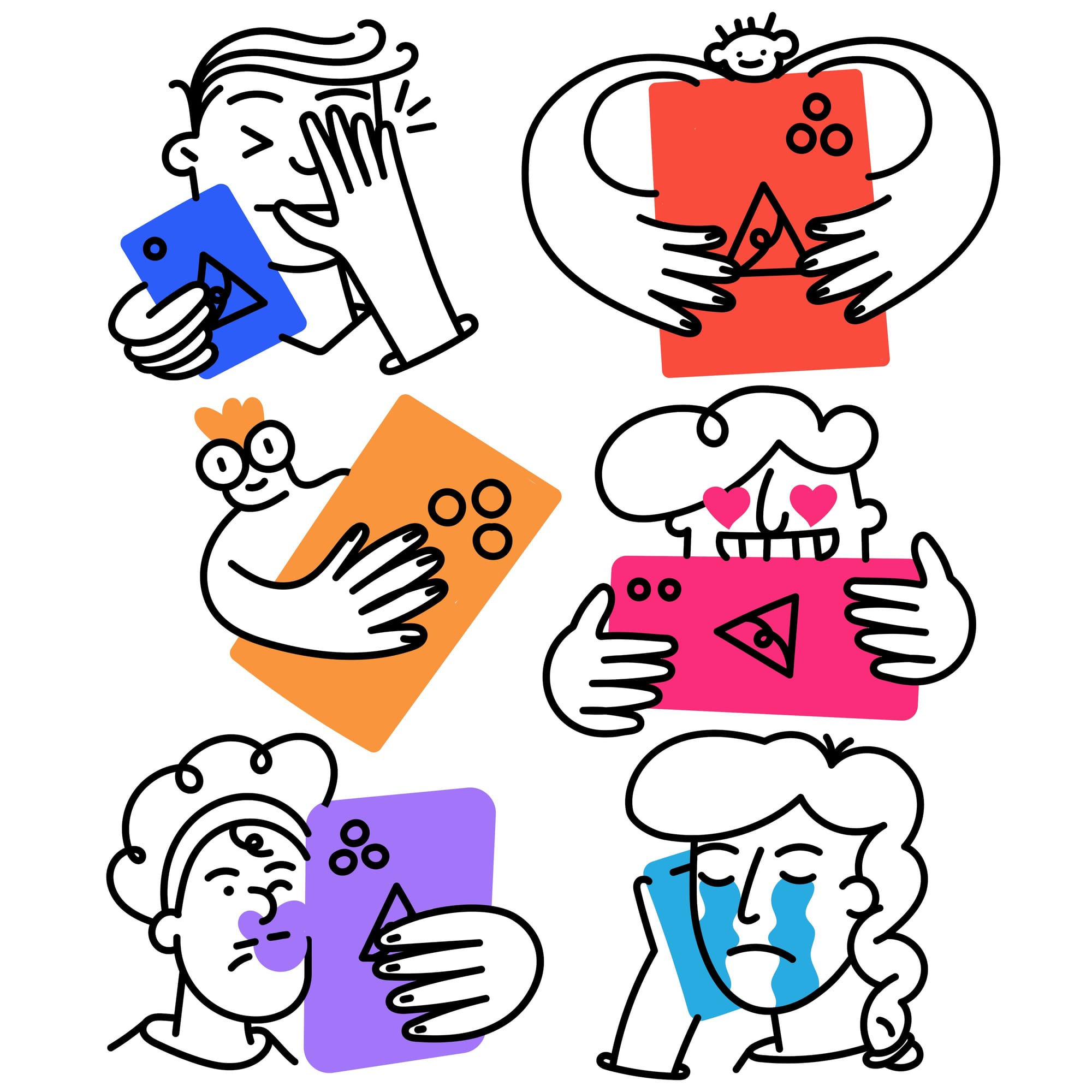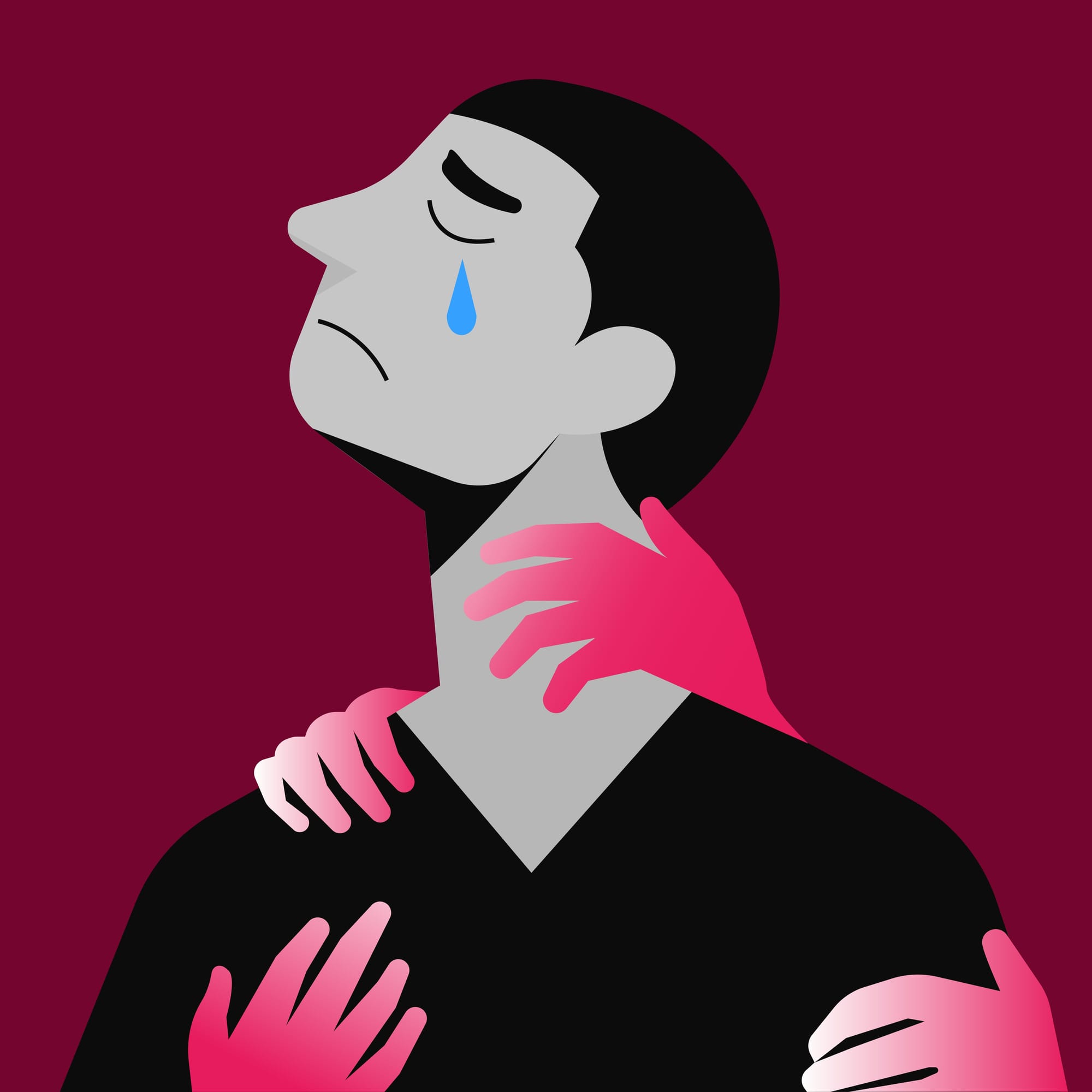What is intrapersonal conflict and how to resolve it
Discover what intrapersonal conflict is and learn effective strategies to resolve it, bringing clarity and harmony to your inner self.

🤖 This podcast is generated using AI technology. Disclaimer: The generated content may contain errors.
Let's dive into the intricacies of intrapersonal conflict, a fascinating psychological phenomenon that I've encountered countless times in my practice, both in Russia and here in Spain. It's a subject that resonates deeply with me, given my own experiences of internal struggle during my emigration.
- What is intrapersonal conflict?Intrapersonal conflict is a state of imbalance arising when a person can't choose between opposing but equally important needs, desires, or impulses. It's like being caught between two lovers – your heart pulling you in opposite directions, each choice as compelling as it is terrifying.I remember when I first arrived in Spain, torn between my desire to embrace my new life fully and the pull of my Russian roots. It was as if I had two versions of myself, each vying for dominance. This internal tug-of-war is the essence of intrapersonal conflict.
- Signs of intrapersonal conflictThe symptoms of intrapersonal conflict can be subtle yet pervasive:It's like trying to play a complex piece on the accordion when your left and right hands refuse to cooperate. The resulting discord is not just in the music, but in your very being.
- Decreased self-esteem
- Feeling stuck or trapped
- Negative emotional state
- Reduced work capacity
- Dissatisfaction with one's actions
- Difficulty adapting to new situations
- How intrapersonal conflicts ariseVarious psychological theories explain the emergence of intrapersonal conflicts:These theories remind me of the diverse instruments in an orchestra, each contributing to our understanding of the complex symphony of human psychology.
- Freud's id-superego conflict
- Karen Horney's safety vs. self-expression dilemma
- Harry Stack Sullivan's lack of support theory
- Viktor Frankl's loss of meaning concept
- Types of intrapersonal conflictsIntrapersonal conflicts come in various flavors:Each type is like a different genre of music, with its own rhythm and emotional resonance.
- Motivational conflict (safety vs. desire)
- Moral conflict (want vs. should)
- Unrealized desire conflict
- Role conflict
- Adaptation conflict
- Self-esteem conflict
- Dangers of intrapersonal conflictProlonged intrapersonal conflict can lead to:It's crucial to address these conflicts before they crescendo into more severe mental health issues.
- Depression
- Psychosomatic disorders
- Resolving intrapersonal conflictResolution often requires professional help, but self-help strategies include:Remember, resolving internal conflicts is like learning a new instrument – it takes practice, patience, and sometimes a good teacher.In conclusion, intrapersonal conflicts are an inevitable part of the human experience. By recognizing and addressing them, we can create a more harmonious internal symphony, leading to greater well-being and personal growth.
- Acknowledging the conflict
- Accepting and experiencing negative emotions
- Self-reflection and scenario planning
- Choosing a satisfying resolution
- Implementing the chosen scenario
What internal conflicts have you experienced in your life? How did they shape your personal or professional development?
As always, I invite you to share your opinion in the comments
With love 😽 🤗 😘
K
Framework

This framework provides a systematic approach to understanding and resolving intrapersonal conflicts, combining theoretical insights with practical strategies for personal growth and well-being.
Let's delve into a comprehensive framework for addressing intrapersonal conflict, a crucial aspect of personal development that I've extensively researched and applied in my practice across Europe. This framework is designed to help individuals navigate their inner struggles and achieve greater harmony.
⚡️ Recognizing Intrapersonal Conflict
Problem: Many people struggle with internal discord without realizing its nature or impact.
Theory: Intrapersonal conflict occurs when equally compelling but opposing needs, desires, or impulses create internal tension.
Example: A marketing executive torn between pursuing a high-paying promotion that requires extensive travel and maintaining a work-life balance for family commitments.
Counter-example: An individual who declines a job offer without inner turmoil because it clearly doesn't align with their values or goals.
Practical Application:
- Conduct a daily self-reflection exercise
- Keep a conflict journal to track recurring internal struggles
- Use mindfulness techniques to become aware of conflicting thoughts and emotions
🎯 Key Takeaway: Awareness is the first step towards resolution. Regularly check in with yourself to identify internal conflicts early.
Analyzing Conflict Components
Problem: Intrapersonal conflicts often seem overwhelming and impossible to resolve when viewed as a whole.
Theory: Breaking down conflicts into their constituent parts allows for a more manageable and strategic approach to resolution.
Example: A software developer conflicted about whether to stay in a stable job or start their own company analyzes the specific aspects: financial security vs. entrepreneurial fulfillment, current skills vs. required business acumen, etc.
Counter-example: Avoiding analysis and making impulsive decisions based on temporary emotions, leading to regret and further conflict.
Practical Application:
- Create a mind map of the conflict, identifying all related factors
- List pros and cons for each conflicting option
- Identify underlying values and long-term goals related to the conflict
📊 Metrics: Track the number of distinct factors identified in each conflict analysis. Aim to increase this over time for more comprehensive understanding.
Applying Psychological Frameworks
Problem: Without a structured approach, attempts to resolve conflicts can be haphazard and ineffective.
Theory: Various psychological theories offer valuable insights into the nature and resolution of intrapersonal conflicts.
- Freud's id-superego model: Balance immediate desires with moral considerations
- Karen Horney's safety vs. self-expression dilemma: Navigate between security and personal growth
- Viktor Frankl's meaning-centered approach: Align choices with personal values and life purpose
Example: A teacher uses Frankl's approach to resolve a conflict between taking a higher-paying administrative role and staying in the classroom, by focusing on where they find the most meaning in their work.
Counter-example: Ignoring psychological insights and relying solely on logical analysis, missing important emotional and subconscious factors.
Practical Application:
- Identify which psychological framework resonates most with your current conflict
- Apply the chosen framework to gain new perspectives on your situation
- Experiment with multiple frameworks for a more comprehensive understanding
💡 Tip: Combine insights from different psychological theories for a more nuanced approach to complex conflicts.
Emotional Processing and Acceptance
Problem: Unaddressed emotions can exacerbate intrapersonal conflicts and hinder resolution.
Theory: Acknowledging and processing emotions associated with the conflict is crucial for effective resolution.
Example: An artist feeling guilty about considering a more stable career acknowledges their fear of financial insecurity and their passion for creative expression, allowing for a more balanced decision-making process.
Counter-example: Suppressing emotions related to a career change, leading to increased stress and inability to make a clear decision.
Practical Application:
- Practice emotional labeling to identify and name feelings associated with the conflict
- Use journaling to explore and process complex emotions
- Engage in mindfulness meditation to observe emotions without judgment
⚠️ Warning: Avoid making major decisions when experiencing intense emotions. Allow time for emotional processing before taking action.
Scenario Planning and Visualization
Problem: Fear of unknown outcomes often paralyzes decision-making in intrapersonal conflicts.
Theory: Mentally rehearsing various scenarios helps reduce anxiety and clarifies potential outcomes.
Example: A professional athlete visualizes both continuing their sports career and transitioning to coaching, imagining detailed scenarios for each path.
Counter-example: Fixating on a single outcome without considering alternatives, leading to inflexibility and missed opportunities.
Practical Application:
- Create detailed written scenarios for each potential decision outcome
- Use guided visualization techniques to mentally experience each scenario
- Identify potential obstacles and strategies to overcome them in each scenario
📊 Metrics: Rate each visualized scenario on a scale of 1-10 for alignment with personal values, feasibility, and long-term satisfaction. Use these ratings to inform your decision-making process.
Value Alignment and Decision-Making
Problem: Decisions made without considering core values often lead to ongoing internal conflict.
Theory: Aligning choices with personal values leads to more satisfying and sustainable resolutions.
Example: An executive chooses a lower-paying role at a non-profit organization after realizing it aligns more closely with their core value of social impact.
Counter-example: Accepting a high-status position that conflicts with personal ethics, leading to ongoing stress and dissatisfaction.
Practical Application:
- Conduct a personal values assessment
- Rate each potential decision on how well it aligns with your top 5 values
- Use a weighted decision matrix that incorporates value alignment scores
🎯 Key Takeaway: Decisions aligned with core values are more likely to result in long-term satisfaction and reduced internal conflict.
Implementation and Adaptation
Problem: Even after making a decision, doubts and new conflicts may arise during implementation.
Theory: Viewing conflict resolution as an ongoing process rather than a one-time decision allows for continuous adjustment and growth.
Example: After deciding to start a new business, an entrepreneur regularly reassesses their decision and makes adjustments to their plan based on new insights and challenges.
Counter-example: Rigidly sticking to a chosen path despite clear signs that it's not working, out of fear of admitting a mistake.
Practical Application:
- Set regular check-in points to review your decision and its outcomes
- Establish measurable goals and KPIs to track progress
- Develop a flexible mindset that allows for course corrections
📊 Metrics: Track satisfaction levels, stress indicators, and alignment with goals on a monthly basis. Use these metrics to guide ongoing adjustments.
Reflection and Integration
Problem: Failing to learn from past conflicts can lead to repeating patterns of internal struggle.
Theory: Reflecting on and integrating lessons from resolved conflicts enhances personal growth and future conflict management skills.
Example: After successfully navigating a career transition, an individual documents their process and insights, applying these lessons to future personal and professional decisions.
Counter-example: Moving on from a resolved conflict without reflection, missing valuable insights that could prevent similar struggles in the future.
Practical Application:
- Conduct a "post-mortem" analysis after resolving each major intrapersonal conflict
- Identify key lessons learned and create actionable guidelines for future conflicts
- Share your experiences and insights with trusted friends or a support group, gaining additional perspectives
💡 Tip: Create a personal "conflict resolution playbook" that evolves with each new experience, serving as a resource for future challenges.
In conclusion, this framework offers a structured approach to navigating the complex terrain of intrapersonal conflicts. By systematically addressing each aspect – from recognition to reflection – individuals can transform internal struggles into opportunities for profound personal growth and enhanced well-being.
What intrapersonal conflict are you currently facing? How might applying this framework help you gain new insights and move towards resolution?





